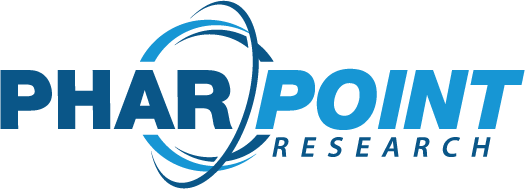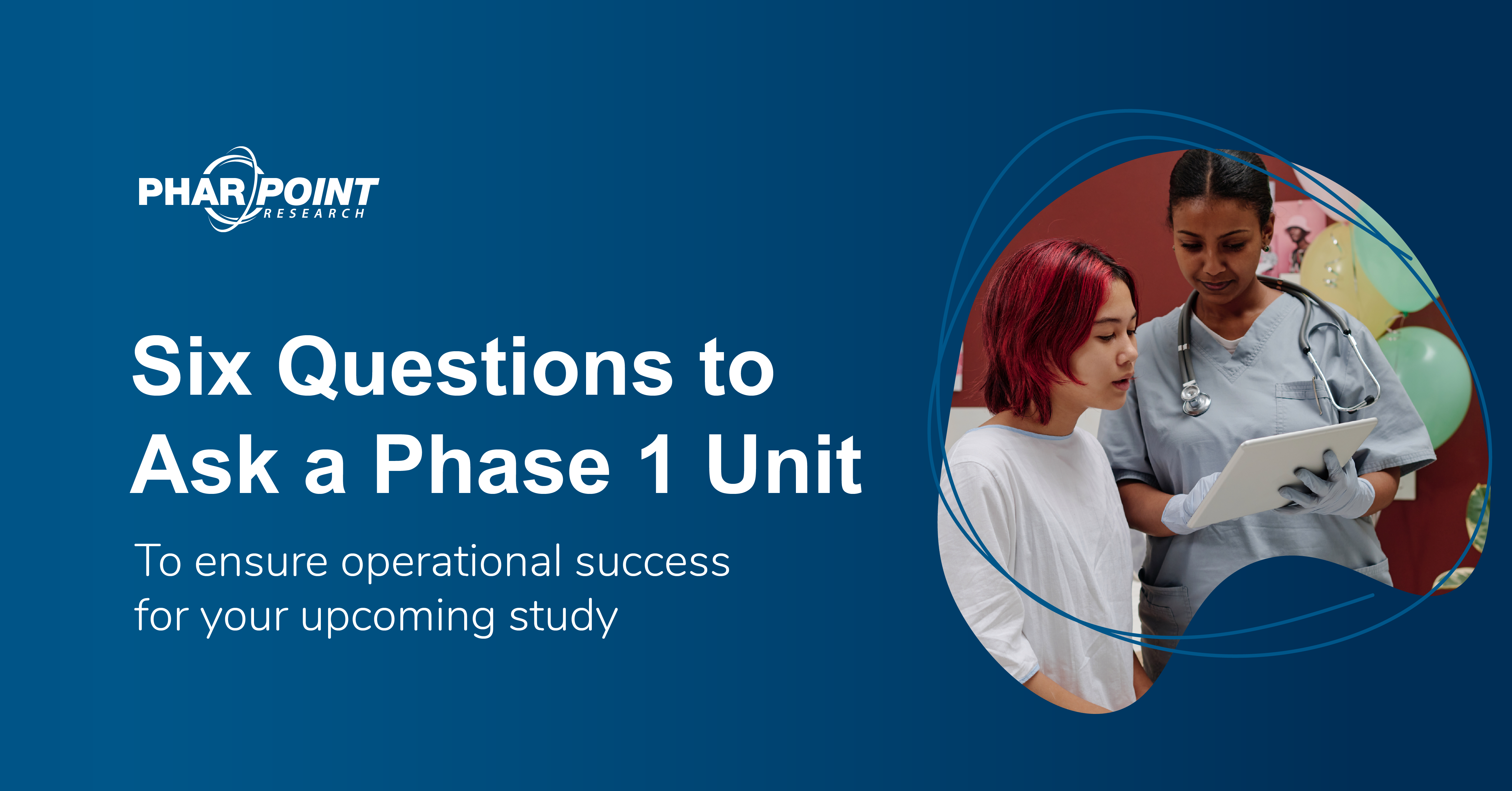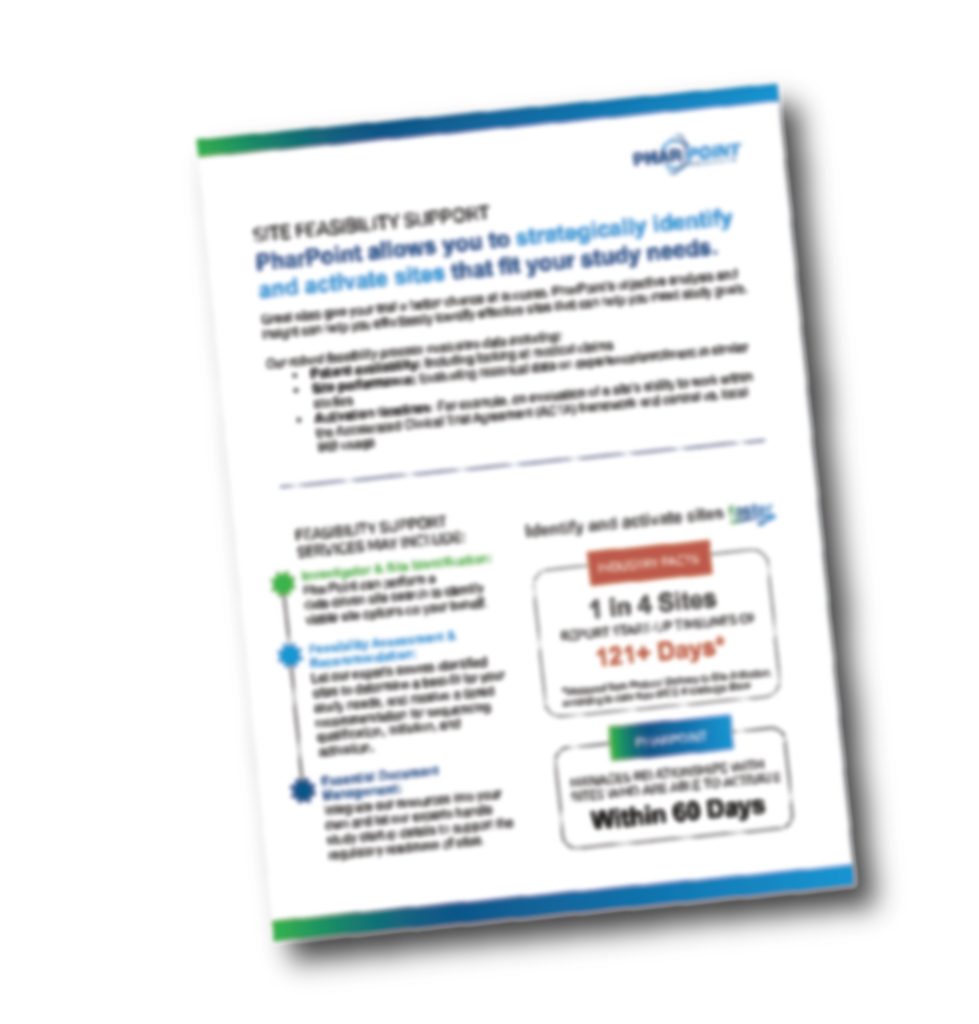Six Questions to Ask a Phase 1 Unit To Ensure Operational Success for your Upcoming Study
Identifying the right partners—and asking the right questions—is key to determining how successful your potential Phase 1 Unit will be in ensuring the safety, quality, and overall operational success of your Phase 1 study.
What questions are important to ask a Phase 1 Unit to ensure that operations can proceed smoothly and keep your study timelines on-track? While all studies are different, certain attributes are often shared as common selection criteria for Phase 1 Units and Phase 1 CROs.
According to research from ISR Reports (originally published in Life Science Leader), some of the most important criteria include operational excellence, therapeutic expertise, and access to patient populations. These criteria are significant whether a team has a preferred provider list or not.
Clinic availability, recruitment strategy, and the experience of the Phase 1 Unit’s Lead Investigator are also all highly valued, especially when not choosing among preferred providers.
The accessibility of the lead investigator is another important factor to evaluate and consider.
PharPoint’s team has extensive experience within site feasibility and site management. In this article, we share six questions for Phase 1 Units that can help determine fit for an upcoming study. We focus on three main areas:
- Site Staff (including expertise and availability)
- A Proactive Approach to Quality
- Participant Access (including recruitment and database maintenance)
QUESTION ONE
Does site staff have the appropriate qualifications for your protocol, including both training as well as access to and knowledge of the systems needed to conduct assessments?
With a rapidly evolving industry partially brought on (or at least expedited) by the COVID-19 pandemic, clinical research professionals need continuous learning to keep up with new developments and technologies.
In addition, the aftermath of the pandemic has caused resourcing challenges for most sites. It is imperative that the site has processes in place to ensure that all tasks required by the protocol are delegated to team members with the appropriate training and experience.
As investigators and site staff are kept busy balancing patient care schedules, training on new platforms, for example, must fit within the criteria of timely, efficient, thorough, and accessible.
Sponsors/CRO can assist in this by selecting systems based on ease of use for site staff, and should be able to look at a sites history to determine whether they will have the right base training to effectively use new technologies. For example, have they successfully used a similar platform before? Are training materials and help desks available if obstacles arise?
QUESTION TWO
Is your site providing regular training/reminders to staff?
The best sites are highly communicative.
Brief daily standups are one way this may be done in practice at a site – using a few minutes each day to reinforce protocol requirements, address any potential roadblocks, and allow for better quality and adherence to protocol along with a general increase of project control.
QUESTION THREE
Is back-up staff available as needed?
Available back-up staff is important to avoiding a domino effect of procedures being late. An example of this may be found in the case of difficult blood draws.
QUESTION FOUR
Are sites using an internal source document quality review, conducted prior to data entry to minimize queries?
All participant study information recorded in the source documents should be reviewed/QCed prior to data entry. Ideally, a site should conduct QC in real-time to minimize errors and queries.
QUESTION FIVE
Is your site’s volunteer database frequently updated and maintained with the ability to be finely segmented?
Sites should be able to give sponsors a clear answer regarding exactly how their volunteer databases are maintained. If a database isn’t frequently updated, and volunteers aren’t regularly contacted, an endlessly large database may be all but useless. Additionally, databases should be able to be finely segmented, allowing sites to sort by inclusion/exclusion criteria.
One example of this is the use of multi-tiered segmenting. This will typically begin with mass notification of participants who meet all I/E criteria and have participated successfully in past studies. After identifying this first tier, a second tier of participants who meet I/E criteria but have not participated successfully in past studies is implemented.
QUESTION SIX
What do the site’s ongoing outreach efforts look like?
Databases maintained with ongoing targeted outreach and community engagement allow for more accurate data and more realistic recruitment estimates.
While the majority of enrolled participants are often sourced from a sites database or their word-of-mouth/referrals, supporting grass-roots efforts with a media presence on mobile phones, local print publications, and televisions may allow sites to reach additional members and pursue continuous database growth.
Advertisements placed on platforms like Facebook, Instagram, and OTT (geo-centric banner ads within mobile applications) drive additional interested traffic to the site’s landing page, with audiences routed through automatic screeners to support priority ranking.
PharPoint Research is a consultative contract research organization that helps sponsors meet their study goals.
For more information about how we can help you confidently navigate site selection for your Phase 1 study, reach out to the PharPoint team.








